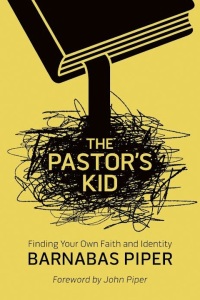 Song of Solomon has always been one of the most difficult to understand books of the Bible for me. Why is it in the Bible? Is it a “love story?” Is it allegory? How does it relate to and apply to my life? All of these are questions that I have had (and continue to have) about the book of Song of Solomon. Odds are, so have you.
Song of Solomon has always been one of the most difficult to understand books of the Bible for me. Why is it in the Bible? Is it a “love story?” Is it allegory? How does it relate to and apply to my life? All of these are questions that I have had (and continue to have) about the book of Song of Solomon. Odds are, so have you.
Well, one author and popular pastor, Matt Chandler, has written a new book on love and marriage based on the book of Song of Solomon, and attempts to give the reader some answers to their questions. The title of the book is The Mingling of Souls: God’s Design for Love, Marriage, Sex, & Redemption.
I have to confess — When I first saw this book, I thought, “Oh, no. Another book on dating, relationships, and marriage. And this one is going to use Song of Solomon as the ‘blueprint’ or ‘guide’ for the relationship advice.” Thankfully, Chandler makes it crystal clear in the introduction that he does not see Song of Solomon as a “Christian guide to dating.” Rather, he says that “it is clear from the book that there is a wise way to approach the opposite sex and that there is a foolish way. What we see in the Song is saturated with wisdom, and the believer in Christ will be reminded of the nurturing, patient, steadfast love of our Savior” (18-19).
What about the title? What does the “mingling of souls” mean? Chandler gets the title from the meaning of one of the Hebrew words for love — dod. This sort of “love” refers specifically to sexual love and is better translated as “lovemaking,” Chandler says. He quotes Paul House by saying that the word carries the meaning of “two souls mingling together.” That’s quite a word-picture, isn’t it? He goes on: “God’s plan is for a man and a woman in the bond of the marriage covenant to have their souls — not just their bodies — become one” (17). God’s plan is for them to have their souls mingled together.
Content
So what are the topics that Chandler addresses in the book? Well, that is one of the strengths of the book. Chandler focuses on a wide array of topics, beginning with the attraction that leads to wanting to pursue a relationship in the first place, to the dating process, courtship, the wedding, the consummation of said wedding, fighting fair, kindling romance, and commitment in the face of hardship. He really covers the whole relationship-process from beginning to end.
Dating
My favorite chapters in the book were on dating and courtship. Probably because of my role as a youth pastor and my time spent with so many teenagers, I have seen as much misconceptions in this area of dating within the Christian life as just about anything else. He hits the nail on the head when he says: “Dating becomes a lot about hiding who you really are, hiding your imperfections, and in many cases, unfortunately, displaying and making primary what ought to be reserved only for marriage” (51). That is — sex. And on this topic of sex and dating, he says:
“If sex is what God says it is, then there are few things as damaging to the human soul as casual sexual encounters. The hookup culture is yet another symptom of a confused and broken society that has elevated the role of physical gratification and sex beyond the biblical norms and wasted them, sacrificing contentment and joy on the altar of momentary pleasure — leaving only brokenness and regret (52).”
Throughout this chapter on dating, he gives several parameters to think through before pursuing a dating relationship as a Christian. And after giving these helpful parameters, he moves onto the chapter on courtship, which is where he argues (rightly so) that true Christian dating should have a specific trajectory in mind — marriage. And if that trajectory is not desired or clearly not going to happen, then the dating relationship should end. Clear and simple.
Who Is The Book For?
I think that this book should appeal to a wide array of readers. For the teenager or college student, the chapters on attraction, dating, and courtship are extremely helpful. For the engaged couple, the chapter on marriage will be a great source of help. For the married couple, whether for a couple of years or a couple of decades, the chapters on fighting fair and commitment to the end are incredibly useful for any marriage. Honestly, no matter where you are in life, at least one of the chapters in the book will be directly applicable and helpful to you. But the strength of the book is its comprehensiveness from the beginning to the end of a relationship — from the attraction between man and woman in the beginning to the commitment between husband and wife to the end.
Conclusion
Overall, I really enjoyed the book. Admittedly, Matt Chandler is one of my favorite communicators. He has the rare ability to engage the reader (or listener) in a very real and fresh way, while at the same time committing to solid, conservative, evangelical, truth. This book is yet another example of that. Chandler does not waver for one second in his commitment to the definition of marriage, the biblical role between husband and wife, the purpose of dating for the Christian, etc. Rather, he makes it clear, from the book of Song of Solomon and the rest of Scripture, what God’s design truly is for love, marriage, sex, and redemption. And that is a message that we all need to hear and be reminded of, both inside and outside of the church, particularly in the culture of sex that we find ourselves in today.
Click here to read an interview that Matt Chandler did with The Gospel Coalition on the book.
In accordance with FTC regulations, I would like to thank David C Cook Publishers for providing me with a review copy of this book in exchange for a fair and honest review.








